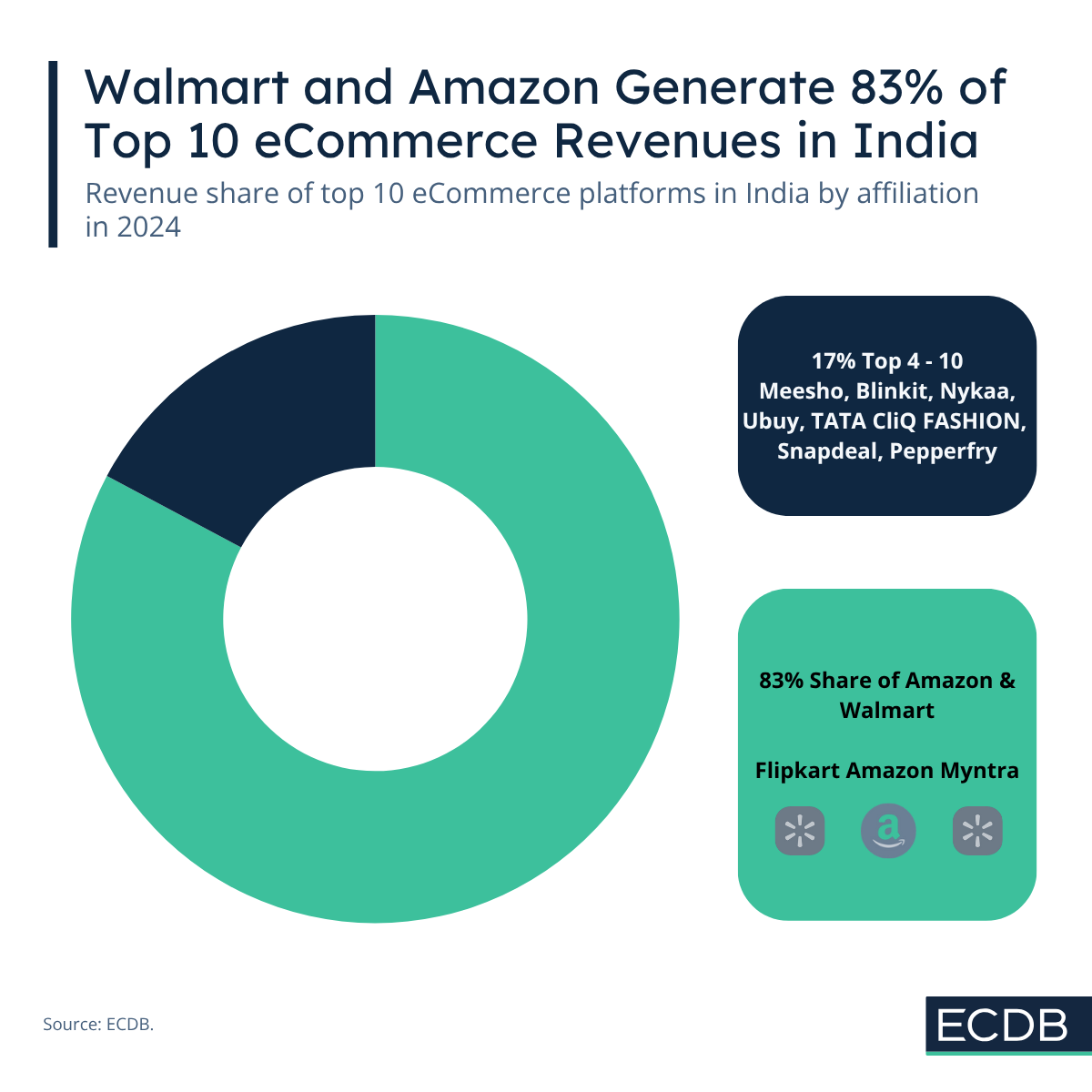India recently surpassed China as the most populous country in the world. India's eCommerce market belongs to the fastest growing globally, and it already ranks fourth worldwide in terms of eCommerce market revenues.
India is vast, it has a young population with an affinity for online shopping, and a status as a burgeoning market for innovation and investment. These factors have led international eCommerce giants to invest in India’s eCommerce market early.
In 2024, Walmart and Amazon generate 83% of the top 10 marketplace eCommerce revenues. They operate Flipkart and Myntra, which are powered by Walmart, and Amazon’s Indian domain. There is a specific reason why it includes the top marketplaces though, while online stores are another story.
Indian Government Disincentivizes Own Inventory for Foreign Brands
Neither Amazon nor Walmart are off to an easy start in India, given that the government disincentivizes the two U.S. retailers to sell own merchandise on a large scale. The two leading retailers face legal restrictions to hold inventory and selling directly to consumers.
Marketplaces specialize in 3rd party merchandise, meaning that other sellers and brands than the marketplace provider can sell their products using that digital infrastructure. There are restrictions to their 1st party access though, due to a limited inventory threshold that hinders their influence to benefit regional sellers.
The Indian government under Prime Minister Narendra Modi imposed these barriers to back domestic retailers. Walmart and Amazon have therefore made a name for themselves in the Indian marketplace game. Their extensive resources and elaborate know-how has made this possible.
Amazon.in vs. Flipkart and Myntra, Together Make 83% of Top 10 Marketplace Revenues
Walmart operates India’s largest marketplace, Flipkart, which sold products worth US$24.7 billion in 2024. Amazon’s Indian marketplace domain under the same guise sold US$22.7 billion.
Flipkart generates 36% of the top 10 marketplace revenues in India, while Amazon follows with 33%. Walmart also operates Myntra, which is smaller in size but adds another US$9.8 billion to the score. Its share of the top 10 is 14%.
The reason why Walmart exceeds Amazon’s influence in this regard is because it drives a different strategy that is tailored to the Indian market. Instead of launching walmart.in, the U.S. hypermarket chain invested in existing marketplace ventures.
India has distinct preferences for eCommerce, which includes large assortments for low prices, highly digitalized payment, mobile integration, varied language options, and flashy discounts.
Indian consumers also favor cashbacks, flash sales, and app-exclusive deals. Social commerce and influencer-driven recommendations are growing fast too, especially on platforms like WhatsApp and Instagram.
Investing in existing platforms instead of launching the same marketplace as in the U.S. has benefited Walmart. Amazon.in is doing well as a marketplace but lags behind domestic providers with the online store.
The Problem With First-Party Sales and Inventory in India
National regulations in India restrict foreign-owned eCommerce companies from engaging directly in first-party sales. Instead, companies like Amazon and Walmart-owned Flipkart and Myntra must operate through marketplace models where they connect third-party sellers to consumers.
This limits their ability to control pricing, inventory, and the end-to-end customer experience. As a result, global players often face challenges in brand consistency, product availability, and quality control compared to operating first-party models elsewhere.
But it is still worth investing in India, despite the challenges. The sheer size of the market, young populace and India’s increasingly recognized status as a contender to China’s influence in the East drives its growth.










